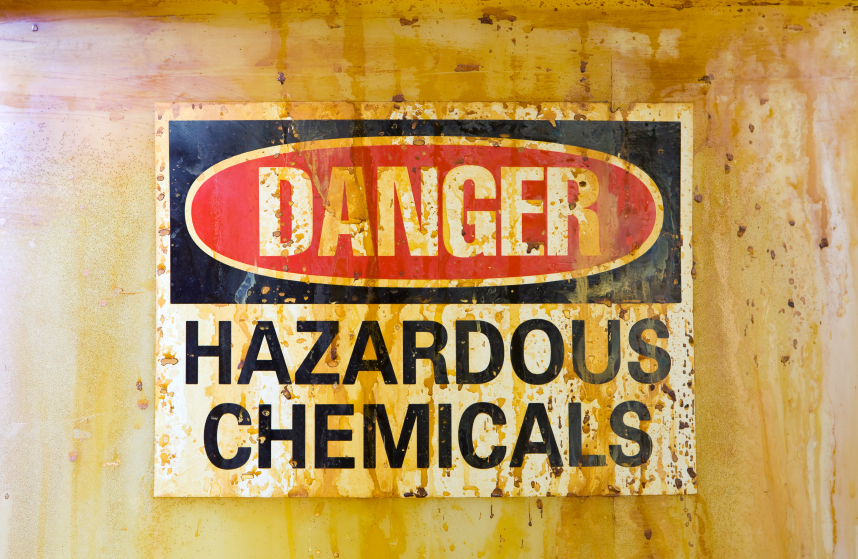FOREVER CHEMICALS in New Mexico: PFAS Contamination Near Cannon Air Force Base Raises Health and Legal Alarms
10/27/2025 / By S.D. Wells

They are difficult to pronounce and nearly impossible to destroy. Perfluoroalkyl and polyfluoroalkyl substances—known collectively as PFAS—are synthetic chemicals found in thousands of products, from nonstick cookware and waterproof clothing to fast-food wrappers and firefighting foam. Because they resist breaking down, PFAS have spread into soil, air, and water systems across the globe and accumulated in human bloodstreams. Studies show that 99% of Americans now carry some level of PFAS in their bodies.
- Widespread Contamination: Nearly all participants (99.7%) in New Mexico’s $1.2 million PFAS testing project had detectable levels of the chemicals in their blood, with residents living near Cannon Air Force Base showing dramatically higher concentrations linked to groundwater contamination.
- Environmental and Legal Fallout: PFAS levels at Cannon Air Force Base reached 26,200 parts per trillion — over 650,000% higher than drinking water standards. The state remains in litigation with the U.S. Defense Department while urging federal action for cleanup beyond the base.
- Health Risks and Persistence: Exposure to PFAS—known as “forever chemicals”—has been associated with elevated cholesterol, cancer, lower birth weights, and liver changes. These compounds can linger in the bloodstream for years, with levels influenced by age, gender, occupation, and lifestyle factors.
- Nationwide and State Response: PFAS contamination has been confirmed at hundreds of military sites nationwide. In response, New Mexico is conducting additional health surveys and implementing a new state law to phase out and ultimately ban products containing intentionally added PFAS.
“Forever Chemicals” in New Mexico: PFAS Contamination Near Cannon Air Force Base Raises Alarm
In New Mexico, the problem has become particularly acute around Cannon Air Force Base near Clovis. For decades, the base used firefighting foam saturated with PFAS, and over time those chemicals seeped into surrounding groundwater. The state’s health and environment departments recently conducted a $1.2 million biomonitoring project, testing the blood of nearly 630 residents who live or work near the contamination plume. The findings, shared at a public meeting on Thursday, were both alarming and illuminating.
Researchers discovered that 99.7% of participants had measurable PFAS in their blood, most commonly types linked to firefighting foams. While widespread PFAS exposure is not unexpected, concentrations among residents closest to the plume were notably higher than the general population. Roughly one-quarter of these individuals recorded PFAS levels within the highest concentration tier recognized in national health guidelines. State officials said the results strongly indicate a correlation between the groundwater contamination migrating from the base and elevated PFAS levels in local residents.
New Mexico Environment Secretary James Kenney emphasized that his agency will continue supporting affected communities, but progress has been hampered by ongoing litigation with the U.S. Department of Defense. The state is suing over environmental damage and contamination caused by PFAS use at Cannon Air Force Base.
Tests at the base revealed PFAS concentrations as high as 26,200 parts per trillion in groundwater—over 650,000% higher than federal and state drinking water limits. Although the Air Force reports spending more than $73 million on investigation and pilot treatment projects, Kenney insists it is time for the federal government to expand cleanup efforts beyond the base’s perimeter. “We need the whole of New Mexico to stand up and say we’ve had it,” he said.
The health implications of PFAS exposure are increasingly well-documented but still not fully understood. Research has linked these “forever chemicals” to elevated cholesterol, kidney and testicular cancers, reduced birth weight, and liver enzyme changes. Some PFAS can remain in human blood for years after exposure ends. According to the U.S. Environmental Protection Agency, depending on the compound, it can take weeks to years for blood PFAS levels to decrease by half.
Tasha Stoiber, a senior scientist at the Environmental Working Group, cautioned that pinpointing a direct link between PFAS exposure and health outcomes is complex. Factors such as age, occupation, diet, and environmental exposure patterns all play a role. Data from Curry County mirrored national trends: PFAS concentrations tended to rise with age, were higher in males, and were elevated among those with military or aviation careers.
The issue extends far beyond eastern New Mexico. Nationwide, watchdog organizations are mapping hundreds of contamination sites, using Environmental Protection Agency data to identify drinking water systems that exceed safe levels. PFAS pollution has been confirmed at hundreds of U.S. military bases, and New Mexico officials are now launching another health survey near a southern base, where PFAS levels in local wildlife and plants rank among the highest recorded globally.
At the Clovis meeting, residents expressed anger and frustration over declining property values, contaminated wells, and lost livelihoods. Many have seen their farms and ranches rendered unsafe for agriculture or livestock.
New Mexico is one of hundreds of plaintiffs in a massive federal lawsuit in South Carolina seeking to hold PFAS manufacturers and users of firefighting foam accountable. Meanwhile, the state is taking independent action. Just this week, officials hosted a webinar on a new state law that will phase out and ultimately ban the sale of products containing intentionally added PFAS.
While litigation and cleanup may take years, the state’s recent blood-testing project has made one thing clear: PFAS contamination is not an abstract chemical concern—it is a living, ongoing crisis that continues to affect the water, health, and livelihoods of New Mexicans.
Tune your food news frequency to FoodSupply.news and get updates on more forever chemicals loaded into junk science food stuff that corporate America loads the grocery store shelves with to drive up chronic diseases and disorders so Big Pharma can take your money.
Sources for this article include:
Submit a correction >>
Tagged Under:
This article may contain statements that reflect the opinion of the author




















